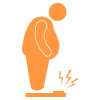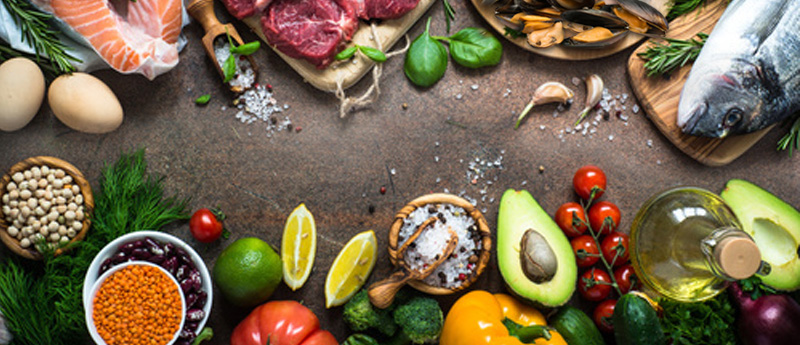Through them, cartilage is able to stay young, strengthen its cushioning effect, become more resistant…
Zinc: the trace element that does everything, the key to cartilage repair.
 It is vital for multiplying the chondrocytes, or the cartilage cells used in the process of maintenance and renewal, notably by producing collagen fibre that provides both solidity and the ability to absorb impact.
It is vital for multiplying the chondrocytes, or the cartilage cells used in the process of maintenance and renewal, notably by producing collagen fibre that provides both solidity and the ability to absorb impact.
Zinc also play a major antioxidative role. It takes part in acid-alkali metabolism and the metabolism of fatty acids by promoting the synthesis of inflammation regulatory compounds.
Deficiency in this trace element is widespread and its absorption diminishes with age.
Silicon: the great architect and renovator
 It is vital for the synthesis of collagen and for other constituents of the joints (chondroitin sulphate, glucosamine). It is an agent that promotes both structure and architecture, as well as regeneration. It also plays a role in the metabolism of molecules that regulate inflammation.
It is vital for the synthesis of collagen and for other constituents of the joints (chondroitin sulphate, glucosamine). It is an agent that promotes both structure and architecture, as well as regeneration. It also plays a role in the metabolism of molecules that regulate inflammation.
Its volume in the tissues diminishes with age. Its assimilation and intake via the diet is lower with seniors.
Vitamin C: also plays a role in the joints!
 Collagen contains a special amino acid, hydroxy-proline, obtained from proline through the action of vitamin C.
Collagen contains a special amino acid, hydroxy-proline, obtained from proline through the action of vitamin C.
Vitamin C also stimulates the genes, enabling the synthesis of collagen. Not to mention its headline antioxidative properties, enabling it to help combat the ageing of the joints.
Manganese: both protector and constructor
 A trace element with a major antioxidative role. It is the co-factor of an essential enzyme for the synthesis of the components of cartilage (chondroitin sulphate, glucosamine).
A trace element with a major antioxidative role. It is the co-factor of an essential enzyme for the synthesis of the components of cartilage (chondroitin sulphate, glucosamine).
Vitamin D: a double action
 Its effects on the bones are well known, but it also has a protective effect against wearing of the joints. It also inhibits the formation of pro-inflammatory compounds.
Its effects on the bones are well known, but it also has a protective effect against wearing of the joints. It also inhibits the formation of pro-inflammatory compounds.
Deficiency is widespread nowadays: in France 80% of the population are believed to be affected!
Omega 3 fatty acids: for soothing joints
 They slow down the production of pro-inflammatory compounds and stimulate the production of molecules vital for tissue repair, called resolvins. Studies show that they are able to slow down enzymes that degrade cartilage.
They slow down the production of pro-inflammatory compounds and stimulate the production of molecules vital for tissue repair, called resolvins. Studies show that they are able to slow down enzymes that degrade cartilage.
Our modern diet favours the consumption of omega 6 fatty acids to the detriment of omega 3. This imbalance has an effect on the health of the joints. It is therefore important to re-establish the omega 6/omega 3 balance, with an objective of 3 to 1.
Polyphenols and other antioxidants: to be used daily
 They play a major role in oxidative stress, a cause of ageing. So, in addition to the trace elements and vitamins already cited for their protective properties, favour a mix of colours on your plate mainly consisting of plants, vegetables and fruit, varied to taste.
They play a major role in oxidative stress, a cause of ageing. So, in addition to the trace elements and vitamins already cited for their protective properties, favour a mix of colours on your plate mainly consisting of plants, vegetables and fruit, varied to taste.
Not to forget spices, which should be taken daily in a wide variety. In top spot: curcuma and its curcuminoids which are well absorbed in combination with oils and fats or pepper. But also ginger, cinnamon... And for the gourmets among you: dark chocolate (min. 70% cocoa solids). Regarding drinks, try green tea which is available nowadays in many varieties (buy loose and from organic agriculture).
For whom ?
 • Seniors, certainly: taking action does not stop natural ageing but enables you to age "healthily".
• Seniors, certainly: taking action does not stop natural ageing but enables you to age "healthily".
 • Genetically predisposed persons: in general when several family members suffer from osteoarthritis. Taking action early is vital.
• Genetically predisposed persons: in general when several family members suffer from osteoarthritis. Taking action early is vital.
 • Overweight people: with the support of a health professional, first take action for the excess weight and its causes (diet, stress, lack of sleep).
• Overweight people: with the support of a health professional, first take action for the excess weight and its causes (diet, stress, lack of sleep).
 • People who have suffered falls or fractures: providing the cartilage with soothing and reconstructive compounds can only be beneficial.
• People who have suffered falls or fractures: providing the cartilage with soothing and reconstructive compounds can only be beneficial.
 • For all those experiencing daily micro-trauma: repetitive movements, parachuting, professional or regular amateur sportspeople; without regard for performing the activity in optimum conditions and in moderation.
• For all those experiencing daily micro-trauma: repetitive movements, parachuting, professional or regular amateur sportspeople; without regard for performing the activity in optimum conditions and in moderation.
Where are micronutrients found ?
Zinc: shellfish, fish, meat…
Silicon: wholegrain or semi-wholegrain cereals, vegetables particularly beans and tubers, beer (yes, really!) and plants/bamboo, horsetail, nettles.
Vitamin C: guava, papaya, blackcurrant, kiwi fruit, strawberries, citrus fruits, cabbage, peppers, spinach.
Manganese: mussels, oysters, hazelnuts, wholegrain cereals, tofu…
Vitamin D : oily fish, cod liver, eggs, butter, girolle mushrooms.
Omega 3 fatty acids: green-leaf vegetables (lamb's lettuce, purslane…), walnuts, flax seeds, rapeseed, walnut and hemp oils, oily fish (anchovies, herring, mackerel, sardines, salmon).

 They play a major role in oxidative stress, a cause of ageing. So, in addition to the trace elements and vitamins already cited for their protective properties, favour a mix of colours on your plate mainly consisting of plants, vegetables and fruit, varied to taste.
They play a major role in oxidative stress, a cause of ageing. So, in addition to the trace elements and vitamins already cited for their protective properties, favour a mix of colours on your plate mainly consisting of plants, vegetables and fruit, varied to taste. • Seniors, certainly: taking action does not stop natural ageing but enables you to age "healthily".
• Seniors, certainly: taking action does not stop natural ageing but enables you to age "healthily". • Genetically predisposed persons: in general when several family members suffer from osteoarthritis. Taking action early is vital.
• Genetically predisposed persons: in general when several family members suffer from osteoarthritis. Taking action early is vital. • Overweight people: with the support of a health professional, first take action for the excess weight and its causes (diet, stress, lack of sleep).
• Overweight people: with the support of a health professional, first take action for the excess weight and its causes (diet, stress, lack of sleep). • People who have suffered falls or fractures: providing the cartilage with soothing and reconstructive compounds can only be beneficial.
• People who have suffered falls or fractures: providing the cartilage with soothing and reconstructive compounds can only be beneficial. • For all those experiencing daily micro-trauma: repetitive movements, parachuting, professional or regular amateur sportspeople; without regard for performing the activity in optimum conditions and in moderation.
• For all those experiencing daily micro-trauma: repetitive movements, parachuting, professional or regular amateur sportspeople; without regard for performing the activity in optimum conditions and in moderation.